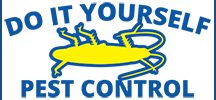 Loading... Please wait...
Loading... Please wait...Categories
Our Newsletter
- Home
- Pests
- Insect Pests
- Carpenter Ant
Carpenter Ant
Carpenter ants are large (10 mm or more) black or brown ants often found in wooded areas. However, they are known to enter homes also, especially in the spring. These ants are most often seen one at a time, and they are by far the largest ants seen on the property. In the spring, you may find large numbers of flying ants. These are the reproductive members of the colony. They indicate the presence of a mature colony nearby, and this is cause for concern. This colony must be found and destroyed immediately because carpenter ants are capable of doing severe structural damage if left untreated. The good news is that can do your own carpenter ant control at a fraction of the cost of professional treatment to take care of this dangerous and costly pest!
Carpenter Ant Control
- Trim all trees and bushes so no branches touch or come close to any part of the house. This is helpful to distance their habitat from your home.
- Correct any moisture problem such as leaking roofs, chimneys or plumbing. Clean out your gutters. Make certain there is good ventilation in the attic and crawl space areas. Like all insects, carpenter ants thrive on moisture.
- Replace or repair all water damaged wood and eliminate all wood to earth contact.
To find the carpenter ant colony look for the following signs:
- Sawdust - Wood shavings, dead ants and old ant cocoons are often piled up outside of the nest.
- Windows - Small slit-like openings that carpenter ants cut into damaged wood.
- Swarmers - The winged reproductive that usually but not always swarm in the spring. Look for them trapped in spider webs, on window ledges, or in light fixtures. They are good clues to nest location.
- Workers - Solitary ants wandering aimlessly, most active at night. You may not see any activity during normal working hours. If you do it does not mean the nest is nearby. Worker ants can travel the length of a football field looking for food.
- Clicking - Rustling or clicking sounds can sometimes be heard coming from carpenter ant nests. If you identify potential nest site, try tapping against it with your hand or a tool. You may get a response, clicking of alarmed ants. Get close enough and you can actually hear the colony chewing through wood inside your walls.
- Water Damage - When you find the leak, the carpenter ants are usually there. Carpenter ant damaged wood contains galleries that feel sandpapered very smooth and clean.
For immediate destruction of the Carpenter Ant colony, find and treat directly inside the carpenter ant nest. A good dust such as Drione works better than a liquid spray. A bellows duster such as the Crusader Duster is a valuable dust application tool.
If you cannot find the nest, then use Advance Carpenter Ant Bait. This is an effective granular bait especially formulated for carpenter ant control. It is both safe and easy to use. One pound is rated to cover one acre, and it can be used inside and outside the home. For faster control consider using Maxforce Carpenter Ant gel bait. This has a natural "honeydew attractant" that Carpenter Ants find irresistible. Using either one or both baits may not destroy the colony completely, but simply cripple it. For complete and immediate death of the entire carpenter ant colony, repair the water leak and treat the Carpenter Ant gallery with Drione dust.
Another product that can be used if you can not find the nest is Termidor SC. Termidor SC has been thoroughly tested and is one of the best products on the market for termite and carpenter ant control. Apply Termidor SC to the home exterior as a low pressure coarse spray around entry points or where they are crawling. Spray Termidor SC around doors, windows, vents, pipes or any other exterior openings (including foundation cracks and holes) where ants can enter the home.
Once activity has ceased spray the entry points outside of your home with a good residual insecticide such as Cypermethrin.
